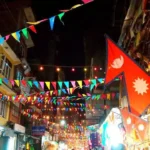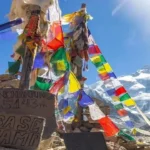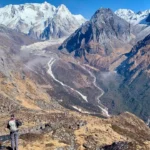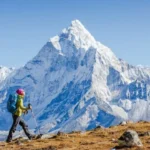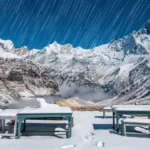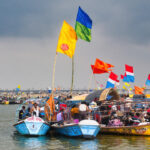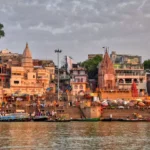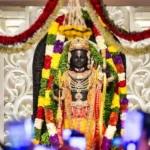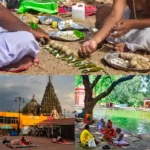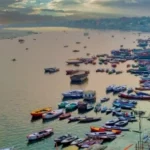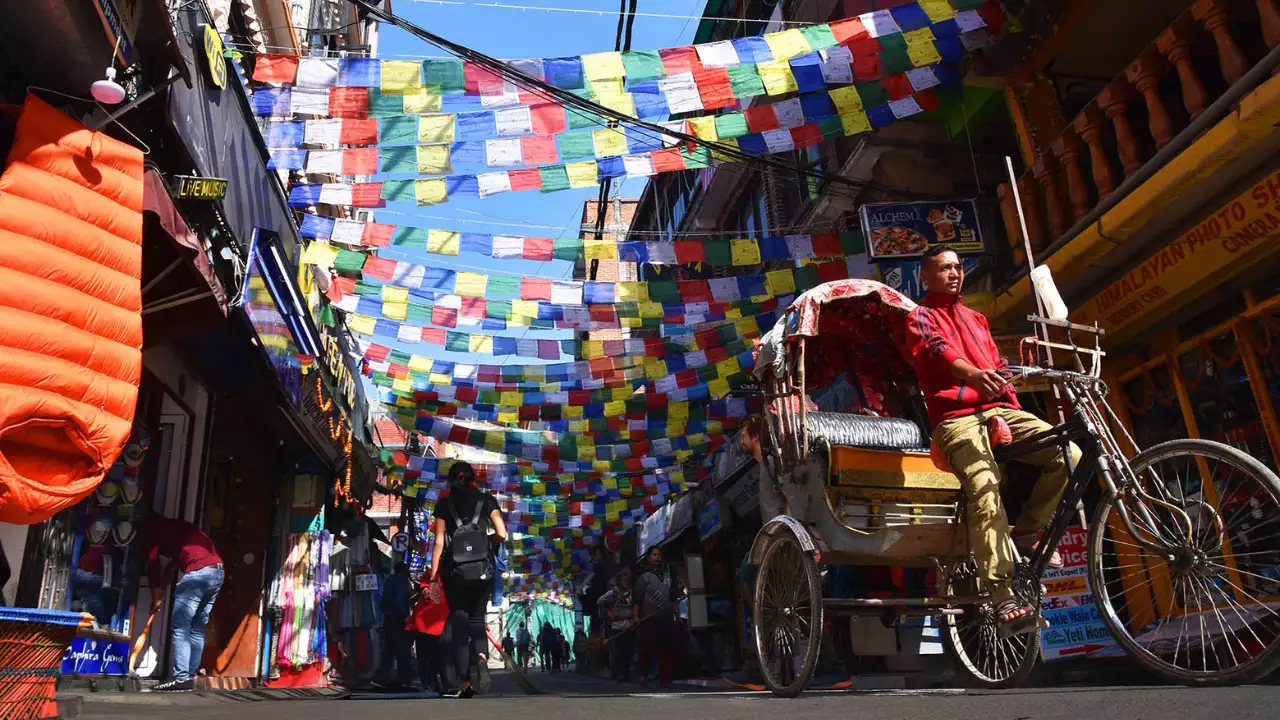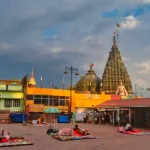A Culinary Journey: Tastes of Nepal and Beyond
Thamel’s culinary scene is a vibrant reflection of its status as a meeting point for travellers from around the globe, yet it remains a fantastic place to delve into the heart of Nepali food culture. The sheer density of restaurants, cafes, and street food vendors means every meal can be a discovery.
The most fundamental and culturally significant meal in Nepal, and readily available in Thamel, is Dal Bhat. More than just a dish, it’s a way of life, typically eaten twice a day. Consisting of steamed rice (bhat), lentil soup (dal), vegetable curries (tarkari), and often served with pickles (achar), a small portion of meat or fish curry, and sometimes yoghurt, Dal Bhat provides sustenance and comfort. Eating Dal Bhat in a local Thamel eatery, observing how it’s served and refilled (often unlimited), is a direct connection to the daily rhythm of Nepali life. The subtle variations in dal spices or tarkari preparation from one place to another offer a nuanced tasting journey.
Equally iconic and universally loved are Momos. These delicious dumplings, influenced by Tibetan and Indian cuisines but uniquely Nepali, are ubiquitous in Thamel. Available steamed, fried, or in soup (C-momo), with fillings ranging from buff (buffalo) and chicken to vegetables, paneer (cheese), or even chocolate, Momos are a perfect snack or a light meal. Sampling Momos from different vendors or restaurants is a simple yet essential Thamel culinary experience.
While not as widespread in Thamel as in the ancient citycentress like Patan or Bhaktapur, some places might offer glimpses into Newari cuisine, the traditional food of the Kathmandu Valley’s indigenous inhabitants. Dishes like Yomari (sweet, steamed rice flour dumplings), Chatamari (rice flour crepe), and varieties of savoury meat dishes offer a deeper dive into local flavours.
Beyond Nepali staples, Thamel boasts an incredible array of international restaurants catering to every palate – Italian, Mexican, Korean, Israeli, Chinese, and more. This diversity isn’t just about catering to tourists; it reflects Kathmandu’s increasing global connections and the presence of expatriates. However, many international restaurants often incorporate local ingredients or offer a “Nepali Special” alongside their foreign fare, creating fusion experiences unique to Kathmandu.

Cafe culture is also thriving in Thamel. Cosy cafes offering excellent Nepali coffee (grown in the hills) are perfect spots to relax, plan your next adventure, or simply people-watch the fascinating mix of travellers and locals. In the evenings, Thamel nightlife comes alive. Bars and pubs range from laid-back spots with acoustic music to lively venues packed with backpackers. This social scene, while modern, is a significant part of Thamel’s current cultural identity – a place where people from different corners of the world converge and share stories.
Rhythms and Melodies: Thamel’s Live Music and Performance Scene
The evenings in Thamel are often filled with music. While many venues cater to international tastes with live rock, blues, or reggae bands – a nod to the area’s historical ties to the hippie trail and its current global audience – you can also find places showcasing traditional Nepali music and dance.
Seeking out venues with traditional Nepali performance,e, Thamel offers a direct cultural immersion. You might encounter performances featuring classical Nepali instruments like the Sarangi (a four-stringed fiddle), the Bansuri (bamboo flute), the Tabla (percussion), or the Harmonium. Folk songs telling stories of the mountains, love, and daily life provide a soulful counterpoint to the more amplified sounds elsewhere. Some cultural centres or larger restaurants host dinner shows that include traditional dances from various ethnic groups of Nepal, offering a colourful and dynamic display of the nation’s diverse heritage.
The prevalence of live music venues, regardless of genre, speaks to the vibrant, energetic spirit of Thamel. It’s a place that comes alive after dark, offering spaces for connection and entertainment that are a cultural expression of the city’s dynamic population.
Art Around Every Corner: Galleries and Artisan Workshops
Thamel is not just a place to buy art; it’s a place where art is created and displayed openly. Beyond the Thangka shops, you’ll find smaller art galleries in Thamel showcasing contemporary Nepali artists. These galleries offer a glimpse into how modern artists are interpreting Nepal’s traditions, landscapes, and societal changes using various media.
The craftsmanship visible in every corner – the detailed metal work on a singing bowl, the delicate brush strokes on a thangka, the intricate patterns carved into wood – is a constant reminder of the cultural value placed on skilled artistry in Nepal. Some shops are essentially small workshops where you can observe artisans at work, adding another layer to the cultural experience. This accessibility to the creative process makes the art scene in Thamel particularly engaging.
Architectural Echoes and Spiritual Nooks
While Thamel is often characterised by its dense, somewhat haphazard construction driven by rapid growth, look closely and you will find reminders of its past and the pervasive spirituality of Kathmandu. Interspersed among the concrete buildings and modern facades, you can still spot older structures with traditional Newari architectural elements – carved wooden windows, intricate brickwork, or small courtyards. These remnants are echoes of the neighbourhood’s history.

More strikingly, tiny shrines, stupas, and small temples are tucked into unexpected corners of the alleys. A small statue of Ganesh might be nestled into a wall, a miniature stupa adorned with prayer flags stands in a courtyard, or a Shiva lingam is housed in a simple stone structure. These aren’t major tourist destinations but are vital parts of the daily spiritual life of the people who live and work in Thamel. Observing locals pausing to offer a prayer, light incense, or leave flowers at these spots provides a quiet but profound cultural insight into the blend of the sacred and the mundane that characterises life in Kathmandu.
Thamel as the Gateway: Connecting to Wider Nepali Culture
Thamel’s designation as a cultural hub isn’t solely based on what happens within its narrow streets, but also because of its function as the primary gateway to experiences beyond its borders.
For many, Thamel is the essential staging ground for accessing Nepal’s incredible natural and cultural diversity. It’s where trekkers finalise plans, meet guides, purchase or rent gear (those essential Trekking gear Thamel purchases!), and obtain permits before heading into the mountains. This preparation process in Thamel is intrinsically linked to the cultural experiences that await on the trails – encountering diverse ethnic groups like the Sherpa, Gurung, or Tamang, visiting remote monasteries, and witnessing traditional mountain life.
Crucially, Thamel’s location makes it the perfect starting point for exploring the major historical and religious sites of the Kathmandu Valley, which are the bedrock of the region’s cultural heritage. Kathmandu cultural sites near Thamel are numerous and easily accessible:
- Kathmandu Durbar Square: Just a short walk or rickshaw ride away, this UNESCO World Heritage site was the royal palace complex and is home to stunning temples, courtyards, and the Kumari Chowk (residence of the Living Goddess). Exploring Durbar Square is stepping directly into the historical and architectural heart of the city.
- Swayambhunath Stupa (Monkey Temple): A slightly longer journey west of Thamel leads to this ancient Buddhist stupa perched on a hilltop, offering panoramic views of the valley. Its spiritual significance and the playful monkeys that inhabit it make it a unique cultural and religious site.
- Boudhanath Stupa: Further east, this massive mandala-shaped stupa is one of the largest in Nepal and a major pilgrimage site for Tibetan Buddhists. The atmosphere here is distinctly different, filled with the chanting of monks and the turning of prayer wheels.
- Pashupatinath Temple: Situated on the banks of the Bagmati River, this is Nepal’s most sacred Hindu temple complex and a UNESCO site. While the main temple is accessible only to Hindus, visitors can witness cremation ceremonies along the riverbank, offering a powerful glimpse into Hindu rites of passage.

Thamel facilitates access to all these sites, making it the practical base for cultural exploration within the valley. Travellers staying in Thamel can easily hire taxis, arrange tours, or get directions to immerse themselves in Nepal’s deeper historical and religious culture. Thisfunctionsn as a logistical and informational hub for wider cultural engagement, not solidifying its cultural significance.
Navigating the Labyrinth: Tips for Experiencing Thamel
Embracing Thamel means embracing its energy and learning how to navigate its unique environment. Here are some tips for making the most of your cultural exploration within this bustling hub:
- Getting There and Around: If arriving from the airport, pre-paid taxis are available, or you can negotiate a fare with a regular taxi (agree on the price before getting in). Once in Thamel, the best way to explore is on foot. Its alleys are mostly pedestrian (though motorcycles and scooters still weave through), and getting lost is part of the adventure! For slightly longer distances within or just outside Thamel, cycle rickshaws offer a traditional (and often scenic) mode of transport, while taxis are readily available.
- Best Time to Visit: Thamel has different moods. Mornings are relatively quiet as shops open. Daytime is bustling with shoppers and trekkers. Evenings come alive with restaurants, bars, and music. Visit at different times to experience its various facets.
- Bargaining: In shops selling handicrafts, souvenirs, or trekking gear, bargaining is expected. Start with a counter-offer significantly lower than the asking price and work towards a mutually agreeable price. Be polite, friendly, and ready to walk away if you can’t agree. Don’t bargain for essentials like food or in restaurants unless explicitly indicated.
- Safety: Thamel is generally safe, but like any busy tourist area, be aware of your surroundings. Keep valuables secure and be mindful of pickpockets in crowded areas. The alleys can be confusing, so having a map or using a mapping app on your phone is helpful, but also allow yourself to get a little lost!
- Staying Connected: Most hotels, guesthouses, and cafes offer free Wi-Fi. Local SIM cards are also easily available if you need consistent data.
- Embrace the Chaos: Thamel can be loud, crowded, and overwhelming at times. Take a deep breath, slow down, and embrace the sensory experience. If you need a break, step into a quiet courtyard cafe or find a rooftop restaurant to gain some perspective above the fray.
- Hydration and Food: Drink plenty of bottled water. Be cautious with street food if you have a sensitive stomach, though many popular spots are perfectly safe. Stick to places with high turnover and freshly cooked items.
The Evolving Face of Thamel: Challenges and the Future
Thamel, like any dynamic urban centre, is constantly evolving and faces challenges. Its rapid growth has sometimes led to issues with cleanliness, noise pollution, and maintaining infrastructure. There’s a constant tension between commercial development catering to international trends and preserving the authentic cultural elements that make it unique.

Efforts have been made in recent years to manage the area better, including declaring some parts pedestrian-only (though enforcement can be inconsistent) and initiatives to improve waste management. As Kathmandu continues to modernise, Thamel will need to navigate how to remain a vibrant, welcoming hub while addressing these challenges and ensuring that its cultural heart isn’t overshadowed by pure commercialism. Its future lies in balancing its role as a global traveller’s nexus with its roots in Nepali tradition and community.
Why Thamel Truly is Kathmandu’s Cultural Hub
Putting all the pieces together, it becomes clear why Thamel is far more than just a market or a place to sleep before a trek. It is Kathmandu’s true Cultural Hu, Thamel. It’s not a single ancient monument frozen in time, but a living, breathing entity where culture is actively experienced and exchanged.
- It is a place where ancient crafts like Thangka painting and wood carving find a modern market, connecting artisans to the world.
- It’s where the aroma of Nepali spices from Dal Bhat mingles with the scent of international coffee beans, reflecting a blend of tradition and global influence.
- It’s where the sounds of traditional Nepali folk music can be heard alongside live rock bands, showcasing the city’s diverse musical palate.
- It’s where hidden shrines remind visitors of the pervasive spirituality underpinning daily life, even amidst commercial bustle.
- It’s whertravellersrs from every corner of the globe converge, interacting with locals, learning about their culture, and preparing to explore the wider cultural landscape of Nepal.
- It’s the accessible entry point to the historical and religious wonders of the Kathmandu Valley, facilitating deeper cultural immersion.
Thamel is dynamic, sometimes overwhelming, but undeniably alive with the spirit of Kathmandu. It is a microcosm of Nepal’s interaction with the modern world, showcasing its adaptability, its enduring artistic traditions, its culinary richness, and its ability to welcome people from all walks of life. It is the beating heart where countless individual cultural encounters happen every single day.









